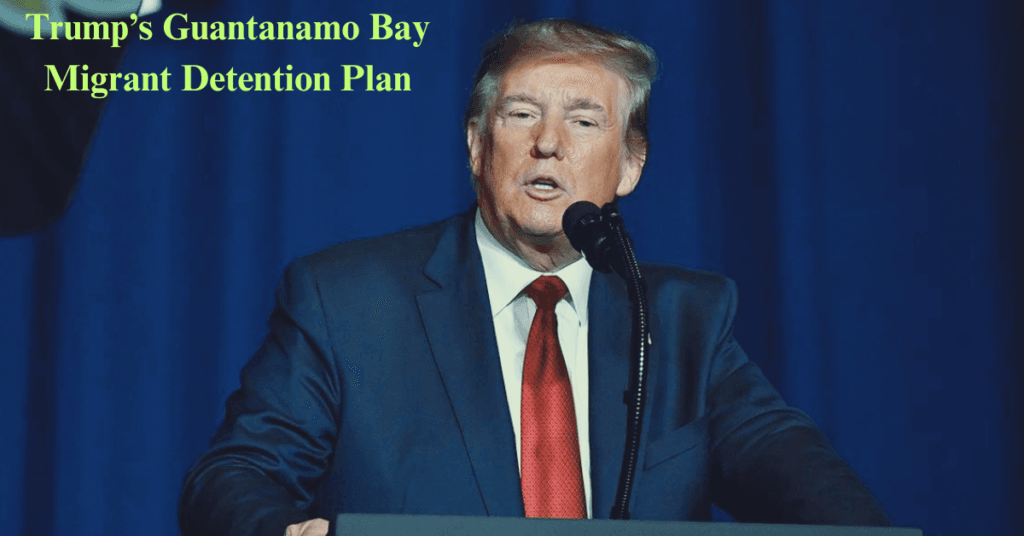
Table of Contents
Trump’s Guantanamo Bay Migrant Detention Plan
Trump’s Guantanamo Bay Migrant Detention Plan : Former U.S. President Donald Trump’s recent directive to establish a large-scale migrant detention center at Guantanamo Bay has ignited significant debate. Announced on January 29, 2025, the plan aims to detain 30,000 migrants deemed as “the worst criminal illegal aliens.” The decision has drawn sharp criticism from human rights advocates, legal experts, and international communities, raising concerns over due process rights, humanitarian issues, and diplomatic relations.
Trump’s Guantanamo Bay Migrant Detention Plan Sparks Controversy
Guantanamo Bay: A Controversial History
The Guantanamo Bay naval base in Cuba has long been synonymous with the detention of terrorism suspects following the 9/11 attacks. However, it also houses a lesser-known Migrant Operations Center, historically used to detain migrants intercepted at sea, particularly from Haiti and Cuba. The move to expand its use for mass migrant detention raises concerns about potential human rights abuses and substandard conditions.
Criticism and International Backlash
Critics argue that Trump’s decision highlights a troubling chapter in U.S. history, bringing back memories of legal controversies surrounding detainees at Guantanamo. Human rights organizations warn that the lack of transparency and judicial oversight could lead to violations of international law.
The Cuban government has condemned the move, labeling it an act of “cruelty” and a defiance of international human rights standards. Many U.S. lawmakers and legal experts predict the initiative will face major legal challenges.
Part of a Broader Immigration Crackdown
The Guantanamo Bay detention plan aligns with Trump’s broader immigration enforcement strategy. In addition to this controversial move, the administration has revoked deportation protections for approximately 600,000 Venezuelans, increasing their risk of removal. The intensification of immigration policies signals a strict stance on border security and deportation measures.
Legal and Humanitarian Implications
Experts warn that using Guantanamo Bay for mass migrant detention could lead to:
- Legal battles over detainees’ rights and due process.
- Inhumane conditions given the facility’s history of human rights concerns.
- Strained diplomatic relations with Cuba and other nations.
- High financial costs associated with maintaining such a large-scale detention operation.
The Future of the Policy
As legal challenges and public debates intensify, the future of the Guantanamo Bay migrant detention plan remains uncertain. Advocates continue to push for humane and lawful immigration policies, while the administration stands firm on its decision.
With global attention on the U.S. immigration system, monitoring the legal, humanitarian, and diplomatic consequences of this policy is essential. Stay tuned for further updates as the situation unfolds.
Trump #GuantanamoBay #MigrantCrisis #ImmigrationPolicy #HumanRights #USImmigration #LegalChallenges #Deportation #MigrantDetention #InternationalLaw #USPolitics #CubaRelations
Conclusion
Trump’s Guantanamo Bay migrant detention plan is one of the most controversial immigration policies in recent years. While proponents argue it enhances national security, critics warn of human rights violations and legal risks. As this issue develops, it remains crucial to analyze the broader implications on immigration policy, legal frameworks, and international relations.






